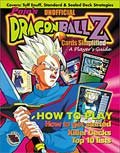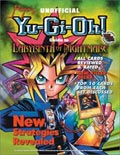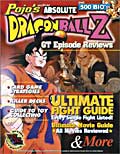|
|
||||||||||||||
|
|
||||||||||||||
|
|
||||||||||||||
|
|
|
|
||||||||||||
 |
||||||||||||||
 |
|
 |
||||||||||||
|
|
||||||||||||||
Nintendo Tips
Trading Card
Game
Deck
Garage
Cartoon/Anime
Advertise With Us
|
Pokemon TCG Expert Rules
In What Order Do You Do Your Attack? The exact steps to go through when attacking are listed here. For most attacks, it won't matter what order you do things in, but if you have to work your way through a really complicated attack, follow these steps in order and you should be fine.
How Do You Figure Out the Damage? Usually the amount of damage an attack does won't depend on the order in which you do things. But if you have to figure out an attack in which a lot of different things might change the damage, follow these steps in order (skip any steps that don't apply to that attack).
How Do You Retreat Using Double Energy Cards? Paying Retreat Costs can get confusing with Double Energy cards. Here's the way it works: Discard Energy cards one at a time until you've paid the Retreat Cost (or maybe more). Once you've paid the cost, you can't discard any more cards. For example, suppose your Pokémon has a Retreat Cost of
What Happens if a Card Tells You to Draw More Cards than You Have Left? Sometimes a card will tell you to draw more cards than you have in your deck or to search for cards that you don't have in your deck. If this happens, do as much as you can (draw as many cards as you have left or get those cards that are in your deck) and continue play as normal. Remember, you lose if you can't draw a card at the beginning of your turn, not if you can't draw one because a card told you to. What Happens if Neither Player Gets a Basic Pokémon in His or Her First 7 Cards? Sometimes neither you nor your opponent will get any Basic Pokémon in your first hands of 7 cards. If this happens, both players shuffle and draw 7 new cards. In this case, neither player gets to draw the extra 2 cards. Repeat this process until at least one of the players has a Basic Pokémon card in his or her hand of 7 cards. If the other player still doesn't have a Basic Pokémon card in his or her hand, that player can shuffle and draw 7 new cards, but the player who already has a Basic Pokémon can draw up to 2 extra cards as usual. Continue this process until both players have a Basic Pokémon in their first hand of 7 cards. What Happens if Both Players Win at the Same Time? You win if you take your last Prize or if your opponent can't replace his or her Knocked Out Pokémon with one from his or her Bench. But it might happen that both players "win" in one of these ways at the same time. If this happens, play Sudden Death. But if you win in both ways and your opponent wins in only one way, you win! What's Sudden Death? If Sudden Death occurs, play a new game of Pokémon, but have each player use only 1 Prize instead of the usual 6. Except for the number of Prizes, treat the Sudden Death game like a whole new game of Pokémon: Set everything up again, including flipping a coin to see who goes first. The winner of this game is the overall winner. It may happen that the Sudden Death game also ends in Sudden Death; if that happens, just keep playing Sudden Death games until somebody wins. Glossary Active Pokémon: Your Pokémon that's in front of all your other Pokémon. Only the Active Pokémon can attack. Attach: To take a card from your hand and put it on one of your Pokémon in play. Attack: 1) When your Active Pokémon fights your opponent's Defending Pokémon. 2) The text written on each Pokémon that shows what it does when it attacks (a Pokémon can have one or two attacks on it). Basic Energy card: A Grass
Basic Pokémon card: A card that you can play directly from your hand on your turn to put a Pokémon into play. See Evolution card. Bench: Your Pokémon that are in play but aren't actively fighting sit here. They're ready to come out and fight if the Active Pokémon retreats or is Knocked Out. Damage: When one Pokémon attacks another, it will usually cause damage. If a Pokémon has total damage greater than or equal to its Hit Points, it is Knocked Out. Defending Pokémon: Your opponent's Active Pokémon during your attack. Discard pile: The pile of cards you've discarded. These cards are always face-up. Anyone can look at these cards at any time. Energy card: The cards that power your Pokémon and make them able to attack. See Basic Energy card. Evolution card: A card you can play on top of a Basic Pokémon card (or sometimes on top of another Evolution card) to make it stronger. Hit Points: A number every Pokémon has, telling you how much damage it can take before it's Knocked Out. In play: Your cards on the table are considered to be in play. Basic Pokémon, Evolution cards, and Energy cards can't be used unless they are in play. (The cards in your deck, your discard pile, and your Prizes are not considered to be in play, but your Benched Pokémon are.) Knocked Out: If a Pokémon has damage greater than or equal to its Hit Points, it's Knocked Out. That Pokémon goes to the discard pile, along with any cards attached to it. When one of your opponent's Pokémon is Knocked Out, you take one of your Prizes. Pokémon: The colorful creatures that fight for you in the Pokémon trading card game. They are represented in the game by Basic Pokémon and Evolution cards. Pokémon Power: The special abilities some Pokémon have. These are written in the same place attacks are, but they always have the words "Pokémon Power" in front of them so that you can tell they're not attacks. Prizes: The 6 cards you put face-down at the start of the game. Every time one of your opponent's Pokémon is Knocked Out, you take 1 of your Prizes into your hand. When you take your last Prize, you win! Resistance: If a Pokémon has Resistance, it takes 30 less damage whenever attacked by Pokémon of a certain other type. Resistance is indicated in the lower middle of the card. Retreat: The act of taking your Active Pokémon and switching it with one of your Benched Pokémon. To retreat, you must discard from the retreating Pokémon Energy equal to the Retreat Cost of that Pokémon. This cost is written in the lower right-hand corner of the card. Sudden Death: Sometimes both players will win at the same time. In this case, you play a shorter version of the Pokémon game called "Sudden Death" (using only 1 Prize each instead of 6). Trainer card: These are cards that you play during your turn by following the instructions on the card and then discarding it. Weakness: If a Pokémon has Weakness, it takes double damage when attacked by Pokémon of a certain other type. Weakness is indicated in the lower left-hand corner of the card. Credits Original Japanese Game Producer: Tsunekaz Ishihara Directors: Tsunekaz Ishihara, Kouichi Ooyama, Takumi Akabane Game Designers: Tsunekaz Ishihara, Kouichi Ooyama, Takumi Akabane Card Text Director: Akihiko Miura Art Directors: Milky Isobe, Takumi AkabaneCard Illustrators: Ken Sugimori, Mitsuhiro Arita, Keiji Kinebuchi, Tomoaki Imakuni, Kagemaru Himeno Manual Editor: Yuichi Konno Playtesters: Eiji Sumitomo, Daisuke Doi, Hideto Yoshimi, Tomohiro Nakata Special Thanks to: Satoshi Tajiri, Shigeki Morimoto, Ken Sugimori, Hiroyuki Jinnai, Hitoshi Matsui English-Language VersionEnglish Translation: Ron Foster English Game Development: Jim Lin, Charlie Catinocool, Robert Gutschera, Tom Wylie, Shawn Carnes, Glenn Elliott, Paul Peterson, Teeuwynn Woodruff Rulebook Writing: Robert Gutschera Art Direction: Jayne Ulander Graphic Design: Maria Cabardo, Corey Macourek, Christopher Rush Editing: Michael G. Ryan Typesetting & Layout: Jill Waller, Chris Nitz, Angelika Lokotz Production: Michelle Lewis, Hans Riefenrath, and the Wizards of the Coast prepress staff Print Management: Callise Janikula Project Coordination (Wizards): Jill Waller, Juliane Parsons Project Coordination (Nintendo): Kenji Okubo Brand Management (Wizards): Michael Brooks, Paul Verner, Ellie Haguel Senior Vice President of Non-Magic Trading Card Games: Rick Arons Pojo.com is here to provide guidance to all Pokemon trainers out there. Whether it's the Gameboy Game, N64 or the Trading Card Game, PoJo.com provides all the wisdom you desire. If you have cool game tips, a killer deck, or breaking news ... send them to us. We'll post it on the site ... and give you all the credit.
|
|
||||||||||||




